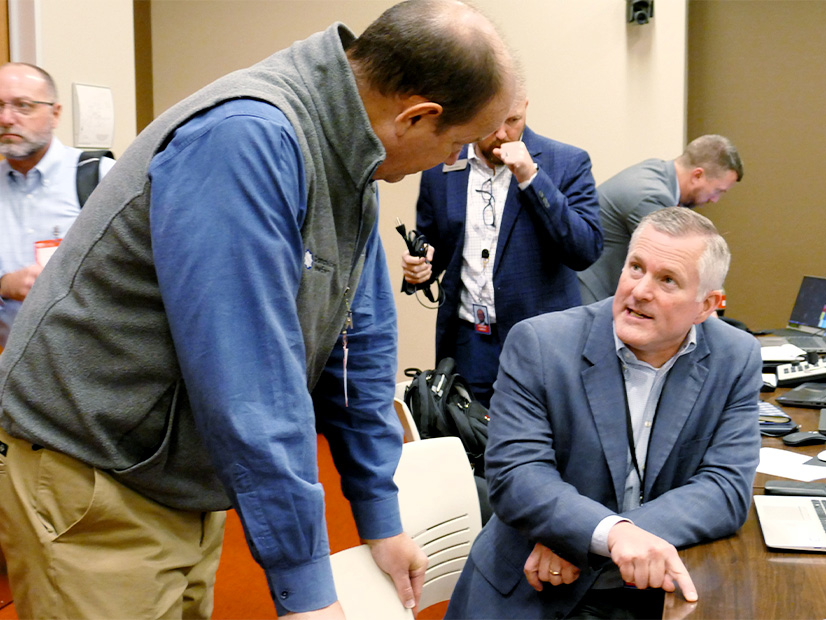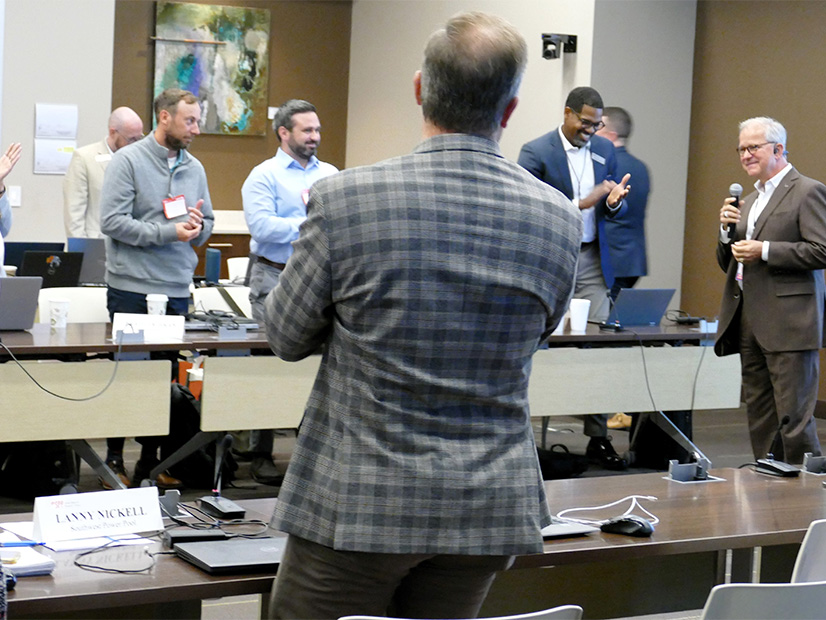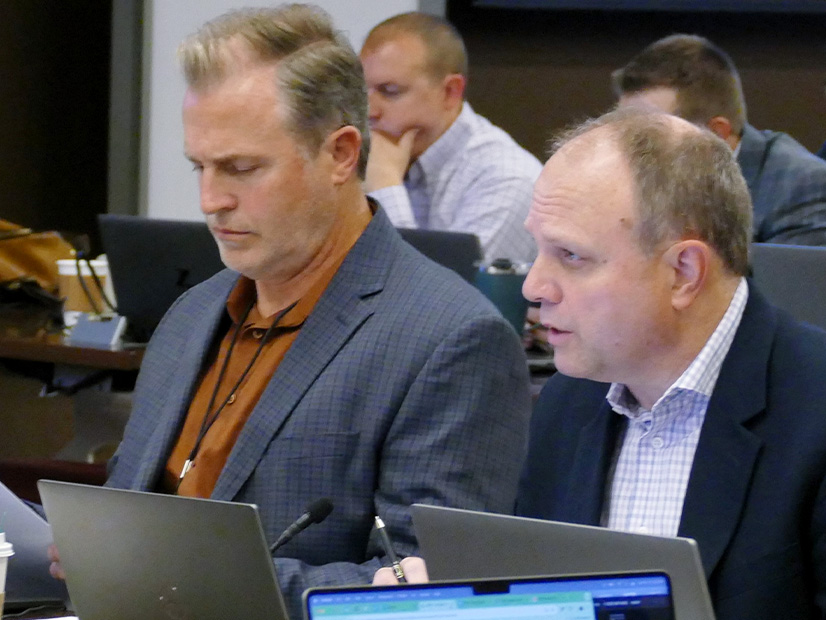LITTLE ROCK, Ark. — SPP says it is devoting significant resources to finally resolve Attachment Z2, a bone of contention among SPP stakeholders since 2016, by the end of this decade.
General Counsel Paul Suskie told the Markets and Operations Policy Committee on Oct. 15 that it will take 24,000 hours of staff time and nearly $2 million to finally resettle Z2 refunds and resettlements following a pivot by FERC in ordering SPP to reverse its previously approved invoicing process.
“Think through this: It took us from 2008 to 2016 to create the Z2 process. Now we have to undo it and recreate it and resettle going back to 2015,” Suskie told MOPC. “Luckily, we have a lot of knowledge and expertise and processes that will make that easier than it was to create it, but it is a significant undertaking that will probably take until 2029 to complete.”
Under Attachment Z2, transmission upgrade sponsors receive credits from any upgrade users whose service could not be provided “but for” the upgrade. The attachment also requires the RTO to invoice the charges monthly and to make any adjustments within one year.
However, software problems delayed the attachment’s final implementation for eight years before 2016, during which the RTO did not invoice for the upgrade charges. FERC approved a waiver request to settle more than 365 days in arrears, but in 2019, the commission reversed course and said SPP should have settled Z2 from only September 2015 forward. (See FERC Reverses Waiver on SPP’s Z2 Obligations.)
By then, SPP already back-billed market participants $138 million, not including interest, in 2016 and continued to use Z2 credits at the same time. It has applied $503 million in Z2 credits since 2015.
“Because this is a process [where] each payment impacts other payments, what we’re doing today is in error because FERC reversed what they did from 2008 to 2015,” Suskie said, noting it will require recalculating each operating day since September 2015 to undo and refund the historical settlement.
Several members filed Section 206 complaints against SPP over the Z2 resettlements. In 2022, the grid operator filed an update to its proposed refund plan from 2019. It urged FERC not to order refunds until all litigation is final. (See 8th Circuit Denies Review of FERC Orders on SPP Attachment Z2.)
Suskie said the commission has been clear that the RTO is not to process refunds without a FERC order. Left in limbo are individual refunds totaling $147 million, plus $33.4 million in interest, due to transmission customers from 2008 to 2015.
SPP is developing an interim software solution to calculate and distribute resettlements on activity from September 2015 until the production system can be used. It expects to have resettlements in sync with routine monthly settlements by 2029. That will require unwinding more than $20 billion in previous settlements to resettle Z2 activity; only 1 to 2% of all resettlements will be related to Z2, staff said.
SPP emailed estimates of the refunds owed and/or that will be received after the MOPC meeting. The grid operator has created a Z2 website and is building an email distribution list to keep stakeholders updated.
SPP Modifies GI Backlog Process
SPP has modified its approach to clearing the backlog in its generator interconnection queue that dates back to 2018, revising the methodology to improve the accuracy of studies and restudies.
“That just made more sense and provided more accurate results at the time than when we filed [at FERC] for the backlog plan,” SPP’s Jennifer Swierczek said. “We realized that doing that many clusters at once, customers might not have all the information they needed to proceed to the facility study and the [generator interconnection agreement],”
The grid operator has added a planned restudy after each cluster’s first two definitive interconnection system impact studies (DISIS). A facility study and the execution of the GIA follow the restudy.
The backlog initially included four clusters, from 2018 through 2021. SPP planned to keep the 2022 window open “so the line didn’t get longer behind us,” Swierczek said, but a record number of requests forced the RTO to shut down the cluster and add it to the backlog. The same thing happened in 2023 when its 129 requests exceeded those of the previous year’s 108.
The 2024 cluster will be handled under the RTO’s normal process, but the grid operator has requested a waiver from FERC to extend the 2024 cluster study’s close from Oct. 31 to March 1, 2024.
SPP began tackling the backlog in 2022 with the 2018 cluster. The queue contained 1,139 active requests for 221 GW of capacity at the time; it now has 395 active requests for 82 GW of capacity. The RTO has executed 48 new GIAs for 7.75 GW of capacity during the backlog work.
Swierczek said the 2017 cluster, which is not part of the backlog, and the first 2018 study group have 91 projects between them, most of which she said are healthy. Large numbers of withdrawals in other clusters will have to be addressed in their next DISIS phase, with all backlog clusters ready for restudies by next summer, she said.
Separately, members approved a proposed revision (RR651) to the GI manual allowing upgrades approved mid-DISIS study from other planning processes to be considered as potential mitigations for constraints identified during the ongoing study. SPP says constraint mitigations identified in the study process will be provided by solutions that have been approved and reduce the need for restudies due to withdrawals.
New MOPC Leadership, Members
The meeting was the last for ITC Holdings’ Alan Myers after two years as MOPC chair.
“He’s done a great job over the last two years, and I’m looking forward to see what he has to close this out with,” said Lanny Nickell, Myers’ staff secretary.
“It has truly been my privilege to lead this group for two years,” Myers said after a round of applause, thanking members for their recognition. Then, true to his nature, he said, “Let’s dive in.”
Omaha Public Power District’s Joe Lang will assume the chairmanship in January.
MOPC added two new members: Ozarks Electric Cooperative’s Derrick Redfearn and Viridon Southwest’s Neeya Toleman. A Blackstone company, Viridon develops transmission projects in SPP.
Curing LREs’ RAR Deficiencies
Members easily endorsed three revision requests in separate votes.
The Supply Adequacy Working Group’s proposal (RR632) giving load-responsible entities several more weeks to address deficiencies in meeting their resource adequacy requirement. LREs would have from March 15 to May 15 (an additional 30 days) to cure summer season deficiencies and from Sept. 15 to Nov. 15 (15 extra days) to resolve winter season deficiencies.
SAWG’s vote to delay a revision request (RR642) until SPP completes its load-hosting capacity tool (LHCT) next year, giving applicable transmission owners three months to review the tool’s data. SAWG is working to implement the Holistic Integrated Tariff Teams’ directive to modify Attachment AQ of the tariff so SPP can proactively perform analysis to determine how much load can be accommodated at each node on the system without incremental investment (load hosting capacity assessment).
The Market Working Group’s recommendation (RR638) to remove the exemption for day-ahead reliability unit commitment self-commits. It said the removal will mitigate market manipulation by resources intentionally switching between “self” status and “market” status to increase their make-whole payments and help the market reach a more economical solution with more accurate information.
MOPC’s consent agenda included SPP’s annual violation relaxation limit analysis; the Project Cost Working Group’s in-service date delay report; the 2025 Integrated Transmission Planning assessment scope; and nine RRs that, if approved by the Board of Directors, would:
-
- RR545: Add language clarifying the objectives and initiation of a high-priority study and provide additional flexibility when developing the scope by removing the requirement to perform economic analysis and expanding on the current requirement to only conform to the ITP Planning Manual’s requirements.
-
- RR630: Add Tri-State Generation and Transmission’s various zones in the Western Interconnection to zones that will be a part of the SPP West Region.
-
- RR641: Clarify that self-committing resources contributing to the make-whole payment distribution volume is not only referring to energy storage resources but to all resource types.
-
- RR644: Remove expired or terminated grandfathered agreements from the list of GFAs and update any termination dates or any changes in buying or selling parties as part of the annual update.
-
- RR645: Update the ITP manual by considering aging infrastructure in transmission planning solutions by accounting for avoided or deferred reliability transmission facilities and aging infrastructure replacement.
-
- RR646: Update the ITP manual’s contingency screening criteria in the constraint assessment from 25% loading to 10% loading for 200-kV and above systems.
-
- RR647: Increase the cap under Schedule 1-A (Recoverable Costs) from $0.465/MWh to $0.515/MWh.
-
- RR648: Remove the regulation-up and regulation-down mileage factors from the applicable mitigated offer calculation and clarify terminology to match the supporting calculation for uncompensated costs for offline uncertainty.
-
- RR649: Add value to the network resource interconnection service (NRIS) product by creating an expedited process for designating new network and designated resources outside of the aggregate transmission service study process. It also would revise the generator interconnection study process for new NRIS requests, define deliverability areas and allow existing resources that meet eligibility requirements to use the expedited process.





